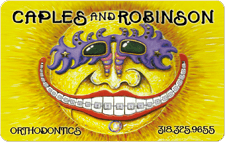 You may have been referred to our office by your dentist because you were told your bite needed work. We see many patients referred to us who are sometimes surprised to hear their bite needs work, because they did not notice. Our doctor looks for a few key things when examining your bite.
You may have been referred to our office by your dentist because you were told your bite needed work. We see many patients referred to us who are sometimes surprised to hear their bite needs work, because they did not notice. Our doctor looks for a few key things when examining your bite.
The View You See
When you look in the mirror, you can see the front of your teeth. What we look for in our office is to see whether your teeth are too long. If you notice your top teeth are covering more than half of your bottom teeth, we call this a deep bite. We also check to see how your teeth are lining up in relation to your lip.
Looking Down
Imagine your mouth wide open. Our doctor will have you open wide to check your teeth’s alignment from the top looking down. An ideal bite will form an arch shape when viewed from above. This is also a good way for us to see if you have gaps between your teeth.
From the Side
It might be hard for you to see your mouth from the side, but it is another important view of your bite that we check in our office. From this view, we can see if your mouth structure needs to be adjusted from an overbite (where your top teeth stick out in front of the lower set) or an underbite (where your lower teeth stick out beyond the top).
Next Steps
Once we’ve evaluated your bite in our office, we can take the next steps in helping you achieve the results you desire. If you have gaps and spaces, we might consider treatment options such as braces or aligners. To correct under or overbites, we might consider treatments such as expanders.
Your Bite Matters
It is important to have a good bite because misaligned teeth can lead to difficulties while eating and speaking. Extensive jaw discomfort and tooth decay are also other side-effects of having an improper bite. Your oral health is dependent on having a good bite. Our experienced team is ready to assist you with any questions you might have.
For more information on the perfect bite or to schedule an examination, contact our office.

 Making sure your child’s mouth develops properly is important. Part of a growing mouth will mean your child’s baby teeth will come out. For many kids, baby teeth loosen and fall out on their own, but every child is different. When you bring your child in for an orthodontic evaluation, we take into consideration your child’s baby teeth. Here are some things to remember about your child’s teeth.
Making sure your child’s mouth develops properly is important. Part of a growing mouth will mean your child’s baby teeth will come out. For many kids, baby teeth loosen and fall out on their own, but every child is different. When you bring your child in for an orthodontic evaluation, we take into consideration your child’s baby teeth. Here are some things to remember about your child’s teeth. For some, the cost of braces can be a deterrent. Many might find it an appealing option to consider making their own set of braces. However, this is a frightening trend that can lead to more damage to your teeth and your wallet.
For some, the cost of braces can be a deterrent. Many might find it an appealing option to consider making their own set of braces. However, this is a frightening trend that can lead to more damage to your teeth and your wallet.



